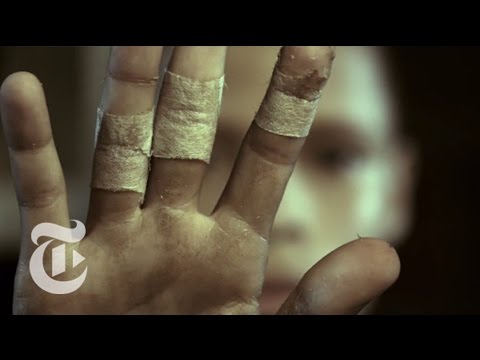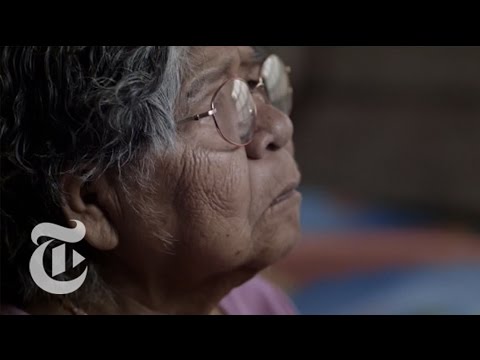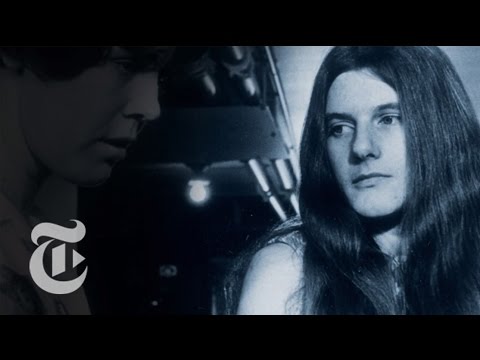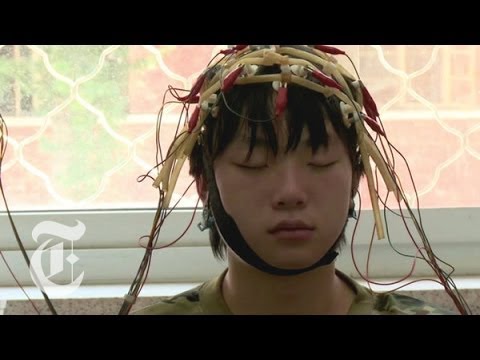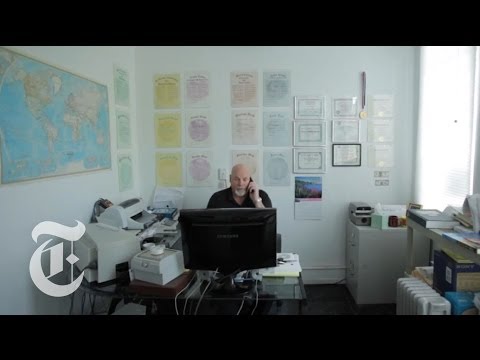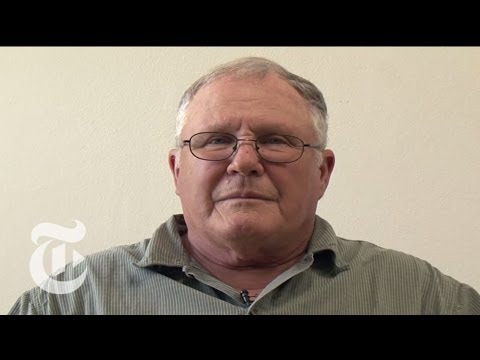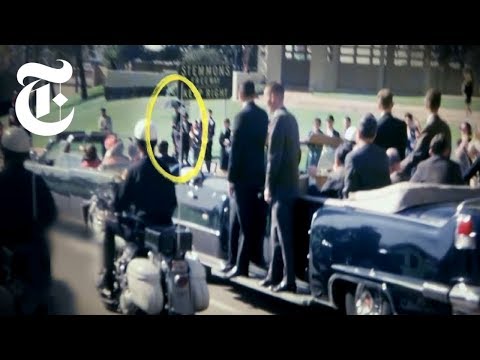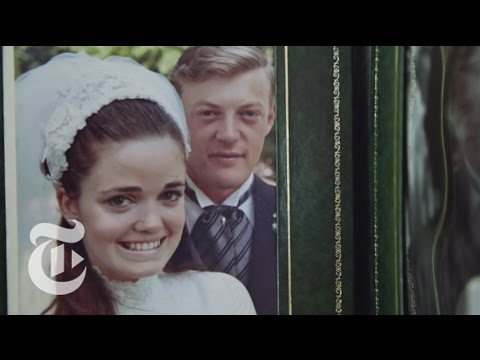However, the Times is much more than a newspaper. Since 2011, the paper has regularly teamed up with a wide variety of filmmakers to produce some truly amazing documentaries. These op-docs cover a range of topics from South American sports to Asian addiction to the confessions of one of California’s most infamous killers. Regardless of subject matter, these op-docs are wonderfully made and incredibly insightful. And while most are under 10 minutes long, these brief little films are all beautifully unique and definitely worth your time.
10‘Kite Fight’
Kites are popular around the globe, but in Brazil these paper planes are more than just toys. They’re handcrafted weapons, dancing and dueling across the South American sky. While soccer is undoubtedly the country’s most popular sport, kite fighting is a close second, especially in Rio de Janeiro where the air is packed with beautiful aerial battles. In “Kite Fight,” director Guilherme Tensol works his way across the Rio rooftops to film kite fighters of all ages and genders preparing for war. They coat their kite strings with a dangerous mixture of wax and powdered glass, and once their divebombers are ready for action, the kites take to the sky like high-flying plankton, bobbing, weaving, and slicing through string. According to a companion article, the sport is illegal in some areas. After all, the kite strings are coated in razor-sharp glass. But in the neighborhood of Rochina, kite fighting is encouraged by community leaders. Sure, there’s plenty of howling and cursing, but it’s all in good fun. The kids don’t even mind their bloodied, bandaged fingers. In fact, they brandish their wounds like badges of honor.
9‘Who Speaks Wukchumni?’
When most people think of Native American heroes, they most likely picture legends like Sitting Bull, Chief Joseph, and Sacagawea. Of course, there are plenty of modern-day men and women who deserve induction into the Native American Hall of Fame. Take Melanie Wilcox, for example. Armed with a microphone and computer, this elderly lady has dedicated her life to saving her people from fading into the past. In this nine-minute documentary, Ms. Wilcox is busy at work, toiling away on her passion project: a vast dictionary of a dying language. Melanie is a member of the Wukchumni, a subgroup of the Yokuts tribe. Sadly, there are only 200 Wukchumni left in the world. Even worse, Melanie is the only one who can fluently speak their native language. Hoping to preserve her history and heritage, Melanie has spent seven years creating a comprehensive Wukchumni dictionary. Director Emmanuel Vaughan-Lee also films Melanie in the process of recording her language so future students can hear the correct pronunciations and inflections. It looks like a long and tedious process, especially as Melanie pecks away at her keyboard, letter by letter, chronicling the stories of her ancestors. But despite the difficulties, Melanie is determined to save Wukchumni from extinction. After all, if a culture loses its language, then what does it have left?
8‘My Life After Manson’
Under the sway of Charles Manson, Patricia Krenwinkel and a handful of “family members” murdered seven people in 1969, including a pregnant woman. After invading Sharon Tate’s home, Krenwinkel killed coffee heiress Abigail Folger, and the next night she stabbed Rosemary Bianca before writing “DEATH TO PIGS” and “Helter Skelter” on the walls in blood. Nearly 45 years later, Krenwinkel granted documentary filmmaker Olivia Klaus an interview, her first since 1994. But unlike her former guru (who’s known for his colorful TV appearances), Krenwinkel was emotional, insightful, and surprisingly honest. Assuming she’s not faking it for the cameras, this convicted killer really seems to show regret. In this New York Times op-doc, Krenwinkel reflects on her horrible past. Instead of justifying her actions or shifting the blame, she actually takes responsibility for her sins. She elaborates on what drove her to Manson and why she followed his insane orders. Krenwinkel also explains how her time in prison has changed her life and given her the ability to make her own choices and form her own thoughts, albeit at a terrible price.
7‘Seeing The Invisible’
For most of human history, we didn’t know about the tiny creatures floating through the air, swimming in the water, and crawling across our skin. Then in the 1600s, a haberdasher-turned-scientist named Anton von Leeuwenhoek used some high-powered lenses to discover the hidden world of “ditergens” or “little animals.” Over time, Leeuwenhoek saw everything from bacteria to red blood cells to sperm. And since the 17th century, we’ve learned there are 10,000 times more creatures living in our guts than there are people on Earth. That’s kind of mind-blowing. But this documentary is much more than a quick profile of a famous scientist. Directed, produced, and edited by Flora Lichtman and Sharon Shattuck, “Seeing the Invisible” differs from the other docs on this list because it’s completely animated. Using paper puppets on adorably noticeable wires, Lichtman and Shattuck fill the screen with a kaleidoscope of creatures. We’re introduced to sausages that glow in the dark, fleas that resemble synchronized swimmers, and mysterious spirals that never stop swirling. The animation is so charming that the film almost feels like a fantasy, only all these critters actually exist. To borrow from Leeuwenhoek, we confess we couldn’t but wonder at this film.
6‘China’s Web Junkies’
The Daxing Center bears an uncanny resemblance to a POW camp. The inmates are awoken each morning with harsh cries and flashing lights. They suit up in camo, march down drab hallways through prison cell doors, and out into the yard where they jog around the compound in military formation. Only the inmates are all teenagers, and they’re all addicted to “electronic heroin,” aka the Internet. In “China’s Web Junkies,” we get an unsettling look inside Beijing’s Internet Addiction Treatment Center. It’s basically a boot camp for kids who play on the Internet for more than six hours each day. The idea is to “de-program” the kids and teach them how interact with real people in the real world. Of course, the methods are rather extreme and involve guards, medication, and military drills. But directors Shosh Shlam and Hilla Medalia don’t only focus on the creepy practices that border on abuse. This op-doc also looks at the other side of the problem: the kids who won’t get off their computers. In several short interviews, the kids admit they spend days doing nothing but staring at a screen. One young boy admits to staying indoors and playing an online game for a month straight. It seems both the sickness and the cure are equally troubling. In addition to focusing on the teens, “China’s Web Junkies” also takes a look at the parents who attend therapy sessions alongside their kids. In fairness, the people running the Daxing Center don’t exactly pat them on the back for their good parenting skills. But perhaps the most memorable moment of the film is the closing. A distressed mother reads her son’s heartbreaking letter, and it becomes clear that his problems are much more complex than simply “Internet addiction.”
5‘The Man Who Sells The Moon’
In 1980, Dennis Hope was going through a nasty divorce, hadn’t worked in nearly a year, and was running out of cash. Then one evening, he looked up into the nighttime sky and saw the moon. Suddenly, the wheels in his head started to turn, and he came up with a brilliant idea. He’d open his own real estate business and sell property on the moon. Sure, it sounds crazy, but Hope has sold over 600 million acres so far. And that’s not counting the 325 million acres on Mars or the 125 million on Venus, Mercury, and Io. So, how can a guy in Gardnerville, Nevada, sell interplanetary property? Well, according to Dennis, Article II of the Outer Space Treaty of 1967 says countries can’t control “any of the satellite bodies,” but it doesn’t say anything about individuals. After filing a declaration of ownership with the UN (and never hearing back from anyone in charge), Hope began selling plots for $24 apiece, and he’s kept this up for over 30 years. Eventually, filmmaker Simon Ennis showed up at his door and interviewed Hope about his insane business scheme. In this short documentary, we see an average day around the Lunar Embassy Corporation, learn about Hope’s plan to build a gigantic lunar pyramid, and witness his high-tech methods for choosing which property he’ll sell next.
4‘Sex Offender Village’
Just a few miles outside Pahokee, Florida, surrounded by acres of sugarcane and green beans, there’s a little town called Miracle Village. The population hovers around 200, but over half of the people living here carry some pretty dark secrets. As of 2014, Miracle Village was home to about 150 convicted sex offenders. In this 2013 documentary, we get a brief glimpse into a community filled with men who’ve broken one of society’s ultimate taboos: engaging sexually with minors. According to Florida law, these felons can’t live within 1,000 feet of where children might congregate. That makes finding a home incredibly difficult. But in 2009, a Christian ministry stepped in to help, providing a place for criminals to live. Miracle Village is cut off from the rest of society and its inhabitants are pretty diverse. In the film, we meet an ex-racquetball coach who had sexual contact with 11 minors. On the other end of the spectrum, we encounter a guy who was convicted of having sex with his 16-year-old girlfriend when he was only 18. According to the documentary, “sex offender” is just too broad a term and should be narrowed down to separate between who’s really a predator and who isn’t.
3‘Holocaust Survivor Band’
Saul Dreier and Reuwen “Ruby” Sosnowicz are two of the most lovable old guys you’ll ever run into. Both in their late eighties, these elderly gents aren’t letting their old age slow them down. Instead of taking their retirement years easy, these octogenarians decided to form their own band. With Saul on the drums and Ruby playing the accordion or the keyboard, this dynamic duo has played everywhere imaginable, from nursing homes to a Vegas casino. However, beneath all that klezmer music, there’s a lot of pain and suffering. While their songs are cheerful and peppy, Dreier and Sosnowicz named their band the “Holocaust Survivor Band.” Originally from Poland, both men barely survived Hitler’s reign of terror. Ruby spent the Holocaust hiding inside a barn and foraging through garbage, and Saul was sent to a concentration camp. But even during the Holocaust, the men found peace through their instruments. In this short op-doc, Saul tells the story of how music helped him get through those hellish months behind barbed wire. And after the two made their way to America, they started their klezmer band as a way of reconnecting with the past and reliving the joyous days before the Nazis invaded their homeland.
2‘The Umbrella Man’
The most famous filmmaker to show up on our list, Errol Morris is no stranger to making documentaries. He’s directed landmark movies like Gates of Heaven and The Thin Blue Line, and in 2011, he took a crack at one of the most important moments in American history: the Kennedy assassination. In “The Umbrella Man,” Morris delves into the mysterious world of conspiracy theories and highlights one of the Kennedy assassination’s most enigmatic characters: the Umbrella Man. But, when Morris interviews author Josiah “Tink” Thompson, we learn some surprising truths about this infamous figure. Even though it’s focusing on the most controversial conspiracy theory of all time, “The Umbrella Man” isn’t really about who killed Kennedy. Instead, Morris focuses on the insane random details that make our world such a weird place. Conspiracy theorists have spent countless hours debating the Umbrella Man, but Thompson reveals his motives were far less evil and much stranger than any crackpot could possibly imagine. In other words, fact is stranger than fiction, and the craziest theories you could cook up pale in comparison to the utter insanity of real life.
1‘A Marriage To Remember’
According to the Alzheimer’s Association, approximately 5.2 million people suffer from Alzheimer’s disease in the US. One of those people is named Pam White. A social worker and mother of three, Pam was diagnosed in 2009 at the age of 61. Slowly, her world started slipping away. Watch this video on YouTube After learning the tragic news, filmmaker Banker White moved into his parents’ home to help care for his mom. As the disease took its toll, Banker interviewed his mom and dad on film, capturing their conversations for posterity as Pam’s memory disappeared. In this eight-minute op-doc, we see Pam slowly sink into the fog of Alzheimer’s, growing confused and lost as the years go by. Fortunately, her husband Ed is always at her side. He’s Pam’s primary caretaker, the guy who helps her out of bed, guides her down the stairs, and brushes her hair every day. Even though Pam’s memory is fleeting, her marriage is rock strong. Basically, this elegantly beautiful film is a testament to true love. Sure, that sounds corny, but in this case, it’s absolutely true.
